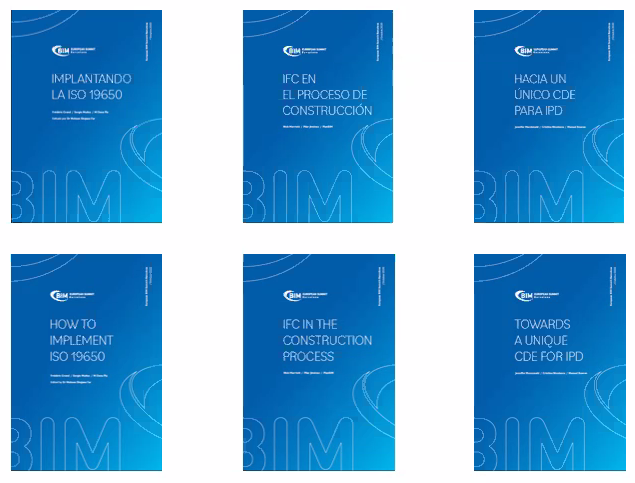The European BIM Summit online (EBS+) will be bringing together, on November 19, worldwide experts in the Building Information Modelling environment not only for the purpose of spreading knowledge but also for generating it.
The congress will be putting one of the main reasons-why of BIM methodology into practice: create a collaborative working environment. And it will do so with the help of the three major round tables that form the backbone of the congress.
These round tables will be debating the three working documents that are destined to become reference tools for the AECO sector and which have been drafted with the collaboration of internationally renowned professionals.
The three documents also represent the three major themes that impact day-to-day good practices in BIM methodology. They are:
- Implementing the ISO 19650, authored by Frédéric Grand, Sergio Muñoz and Maria Elena Pla and edited by Dr. Mohsen Shojaee Far.
- IFC in the building process, produced by Nick Marriott, Pilar Jiménez and PlanBIM from Chile.
- Towards a single CDE for IPD, by Jennifer Macdonald, Cristina Niculescu and Manuel Bouzas.
All the course attendees will receive the draft documents in advance, in Spanish and English, so that they can prepare their inputs. The definitive approval will be given after the round tables, which will feature the participation of the members of the working groups tasked with drafting them.
Implementing the ISO 19650
The ISO 19650 standard determines the organisation and digitisation of information in building and civil engineering projects that use BIM and how to manage this information. It was approved in 2018, and since then it has developed three of the five annexes that it envisages.
The set of international standards included in the EN-ISO 19650 series defines the framework, principles and requirements for the acquisition, use and management of information in building and civil engineering projects and assets throughout the life-cycle, and affects all the stakeholders from the development phase through to operation.
The implementation of ISO standards in any company often involves difficulties on account of the requisite administrative and bureaucratic formalities. Nevertheless, the ISO 19650 is the BIM ISO and the sector must implement it as soon as possible. Facilitating this process is the objective of the document that will be approved at the next European BIM Summit online as it provides the guidelines required to do this successfully.
IFC in the building process
The Industry Foundation Classes (IFC) is a data format that permits the exchange of information among all the professionals engaged in a building project, from the preliminary project phase all the way through to maintenance. It is an open and neutral format devised to facilitate interoperability and therefore to cater to the principle of cooperation that underpins the BIM methodology.
The use of IFC is very common in the planning phase. However, it is more difficult for it to translate into something more operational during the actual building phase. Building engineering acts as a hinge between the idea and the project and the actual building work, as it allows us to translate what an architect has designed or an engineer has planned into something buildable. Nevertheless, it is not always taken into account despite being a key factor in this phase.
The transition between each phase involves a loss of information, and therefore, between the design and the actual materialisation of the project, substantial overcosts tend to be run by the end of the cycle during the management, maintenance and operating phases. This is why all these phases must be aligned from the outset. Through the proper integration of the IFC, we can optimise the exchange of information across all processes.
Towards a single CDE for IPD
The goal of the Common Data Environment (CDE) for Integrated Project Delivery (IPD) is to create a collaborative platform on which all the stakeholders in a project share costs and benefits while visualising their ultimate goal.
In major infrastructure and facility projects, costs and delivery terms tend to become more expensive and be protracted, respectively. This is because each stakeholder is only responsible for their specific part of the project. Communication and coordination between the parties breaks down, there is no co-responsibility.
With a harmonised CDE for IPD, we deliver a collaborative and optimised environment that avoids the need to share “weighty” documents that make it difficult to operate seamlessly and simultaneously in the cloud. By doing so, we foster cooperation and co-responsibility from the outset of the project.
If you have not already done so, sign up now for the most comprehensive online Congress about BIM and be a part of these international-class documents. There is a 50% discount available up until November 8.
The European BIM Summit is possible thanks to the contribution of our sponsors: Roca, as Main sponsor; Finalcad, as Gold sponsor; Agència Catalana de l’Aigua, ATL, Bentley, CIAT, FGC, MUSAAT, PREMAAT, Graphisoft Archicad, SIMBIM Solutions, Ineco and Suez as Silver sponsors; Calaf Constructora, Copisa, and Fundación Laboral de la Construcción, as Pro sponsors; and Master Builders Solutions, as Sustainability sponsor. It has also the support and the collaboration of the Departament de Territori i Sostenibilitat of the Generalitat de Catalunya.






